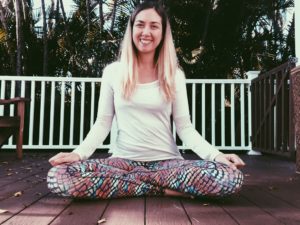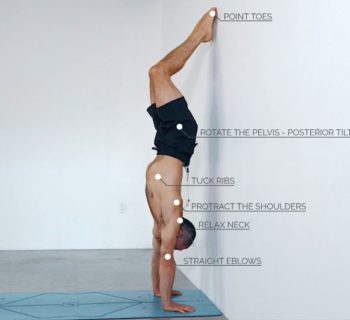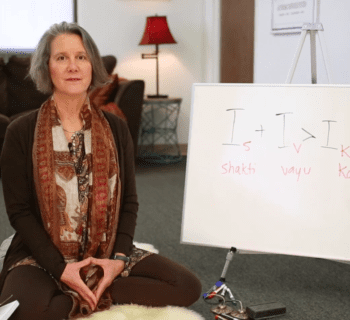In the last 10+ years, both yoga and meditation have grown significantly in popularity across the globe. For most of us, however, the path of yoga begins with a focus on the physical aspects of the practice, like building strength, flexibility and coordination. It isn’t until we begin to further develop and deepen our practices that we actually discover the truth – yoga is more about the mind than anything else.
I, like many, began my pursuit of yoga with a focus on movement, eager to flow my way into a stronger & suppler body. So, I practiced frequently, both at home and at my local studio. With time and dedication, I was indeed able to achieve the results I was looking for, but I also noticed other effects – like the fact that I felt less stressed and more at peace in my body. As someone who had always been a bit of a worrier, this was huge.
Yoga became a place of solace for me. The more I practiced, the more I began to realize that it was the moments I spent in stillness that truly impacted me. So, naturally, I became increasingly interested in the stillness part of the practice – the meditation.
I like to think of yoga as training for meditation. The physical postures work as a means for helping us find more comfort in our own bodies. This in turn, allows us to sit in stillness for longer periods of time without getting too distracted by our bodies. The best time to meditate is after asana.
Unfortunately, most yoga studios don’t offer time for meditation after practice. For this reason, it’s important to get comfortable practicing yoga at home. That way you can move into meditation straight away after you’re through with asana. But, what if you don’t know how to meditate?
Figuring out how to sit for meditation is a lot more difficult that you might think. When we’re new to meditation, most of us simply don’t know what to do. We often find ourselves wondering, am I doing this right? Then, when we notice that our minds are going a million miles a minute, we start to think we just aren’t meant for meditation.
This could not be further from the truth. Every single person on the planet who sits down as a beginner in meditation will find a million thoughts racing through their heads. Even advanced meditation practitioners have a hard time getting their minds focused sometimes. The important thing to remember is that like yoga, meditation is a practice, and it takes some getting used to.
If you’re curious about meditation or think you might want to give it a try, there are tons of meditation classes you can practice with on Omstars.com. I recommend moving through an asana practice with one of your favorite teachers first, then transitioning into a meditation class. Try clicking the button below to browse through some of the available meditation classes offered online, or sign up to become an Omstars member by clicking here.
If you’re interested in giving meditation a go on your own, check out this Beginners Guide to Meditation, or just follow these steps:
Step 1: Find a quiet place where you can sit comfortably for at least 5 minutes. You can sit in a chair, on the floor, in your bed – really, anywhere that works for you.
Step 2: Sit up tall, let your spine be long, and find comfortable stillness.
Step 3: As you settle into your seat, bring your awareness to your breath, observing each inhale and exhale.
Step 4: Try deepening the breath so that the belly begins to expand as you breathe in and out. Keep your focus on your breathing.
Step 5: If your mind starts wandering, just notice your thoughts. Then, let them go and bring your awareness back to your breath.
Step 6: Continue focusing on your breath for at least 5 minutes. Each time your mind wanders off, notice, and come back to your breath.
That’s all there is to it.
It’s important to know that your mind will wander off – probably several times. You will get distracted and you will most likely feel like you can’t focus. This is part of the process. That’s why it’s a practice. We have to practice bringing our mind back to our point of focus (in this case, the breath) again and again.
Learning to focus the mind in meditation can carry over into everyday life. In time, we can learn to let go of stress and anxiety with ease. We can learn to keep our attention on projects and work for extended periods of time. We may even find that we become better listeners, better students, better partners, and better human beings. That is the power of meditation.
By Alex Wilson
Practice Meditation on Omstars
Alex Wilson is a writer, yoga teacher, and Ayurveda Yoga Specialist. She is passionate about empowering students to create space for healing and self-discovery in their lives. She is also the content manager for Omstars.com.











